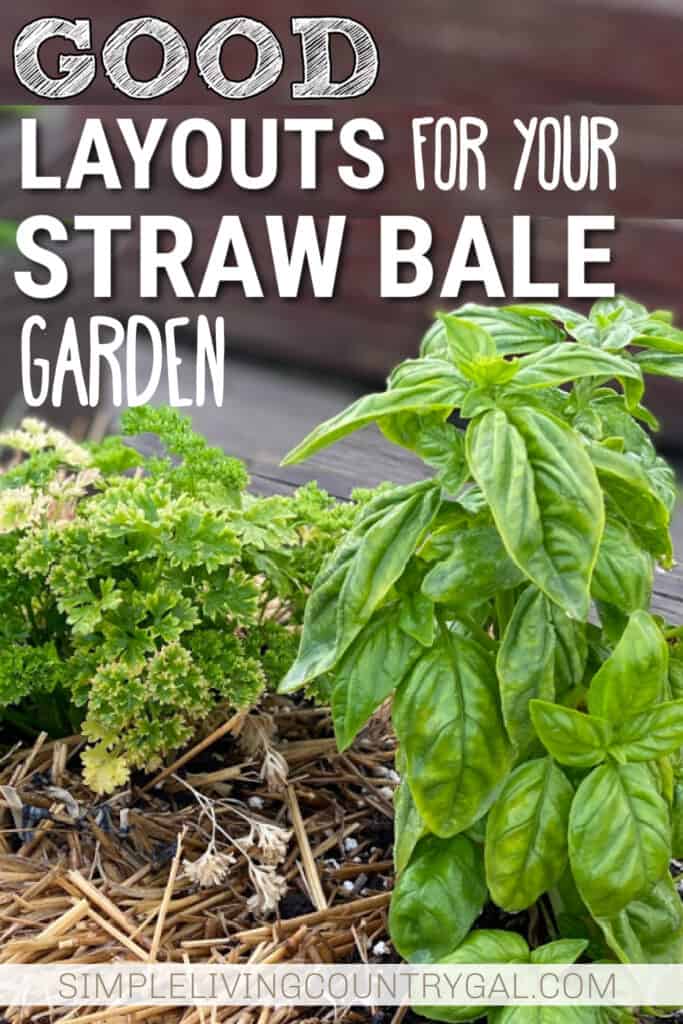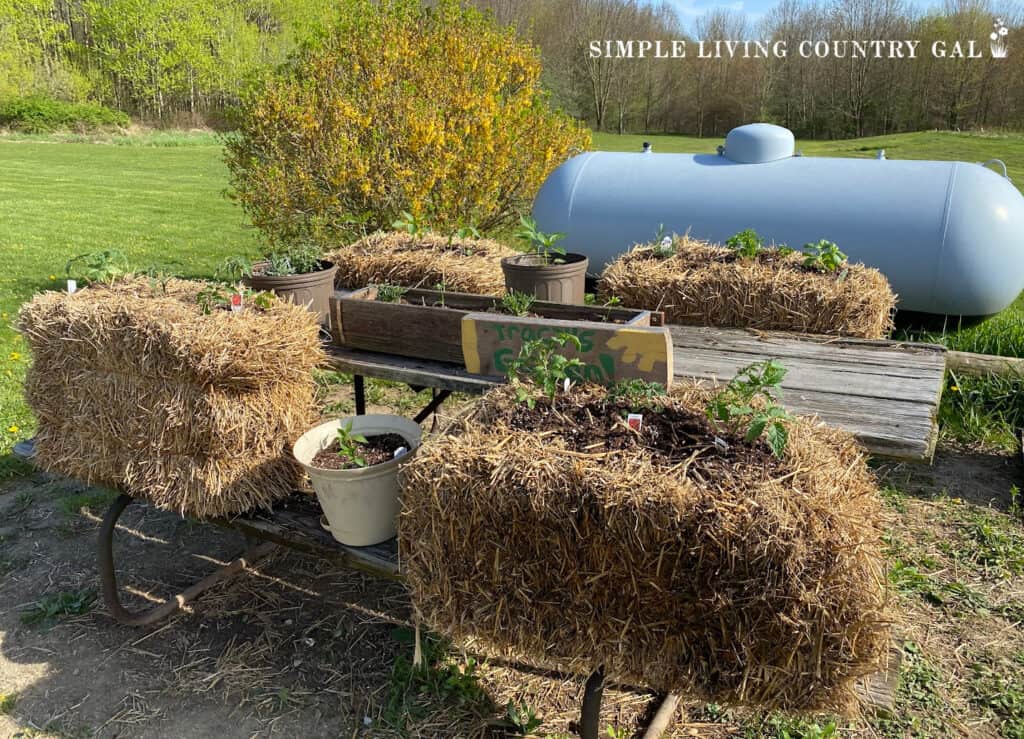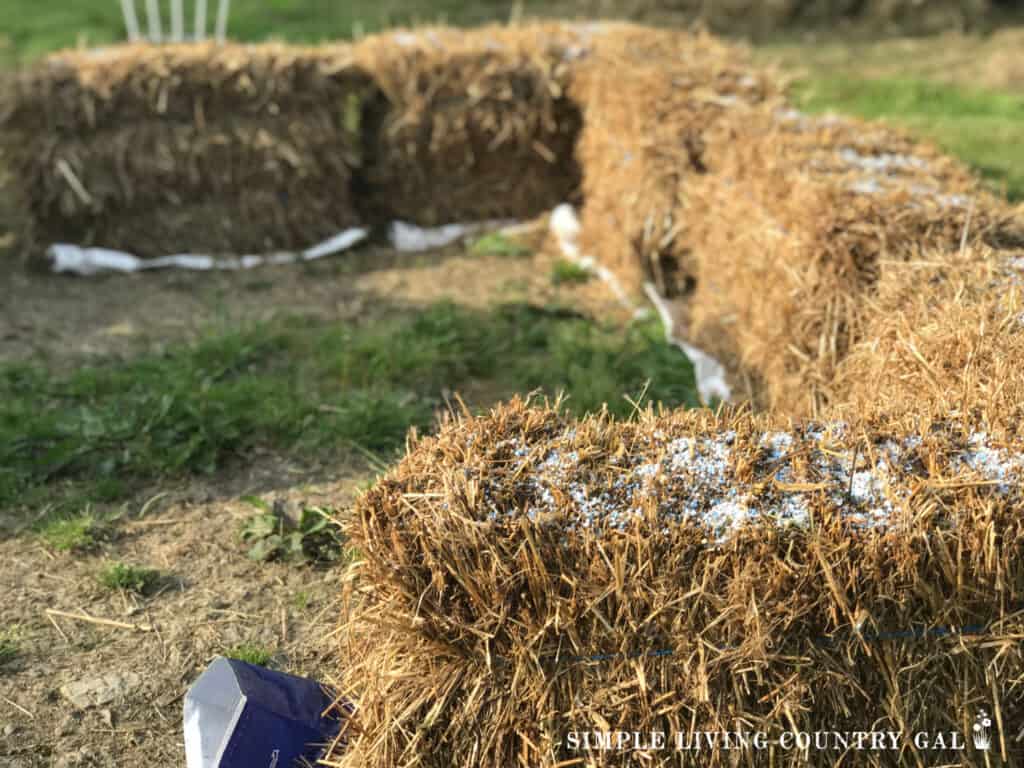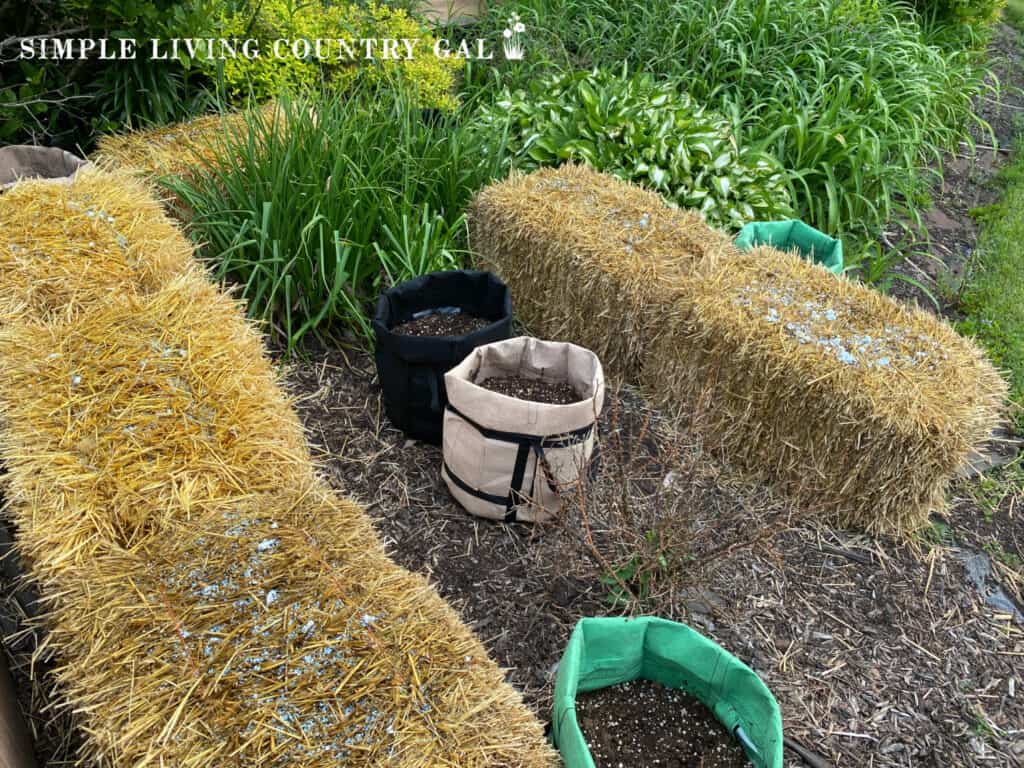Straw bale garden plant layout
If you are new to growing plants in bales, I am sure you have many questions! This article will answer the question, what is a good straw bale garden plant layout?
How to start a backyard garden growing the vegetables and herbs you love in bales of straw. Effortless gardening tips that are easy on your time, your wallet, and your body.

Growing a vegetable garden doesn’t have to be impossible; it can be easy and even enjoyable. If you’re short on space or just looking for something fun and different to try in your garden this year, why not create a straw bale garden? Straw bale gardening is the perfect solution for small yards that lack tilling or soil composition issues. It offers an easy way to grow vegetables and herbs without expensive raised beds — all you need is one or two bales of straw, and you have enough to get started. Once you have them, use these tips on how to set up a good layout for your plants so that each has the room to flourish.
What is straw bale gardening?
Straw bale gardening is an easy and self-contained way to grow your own vegetables and herbs. It involves the use of straw bales as a growing medium, which can be used to create raised beds or containers without any tilling or soil amendment. The straw acts both as a nutrient source for the plants and allows for good drainage giving roots the very best environment.
What plants grow best in straw bales?
Straw bale gardening is great for growing a variety of vegetables and herbs. Tomatoes, peppers, cucumbers, eggplants, kale, basil, chives, thyme, oregano, and rosemary are all well suited to this type of gardening.

Straw Bale Garden Layout Options
When it comes to laying out your straw bale garden, there are a few options.
- Single row – This is best if you are only going to have a few bales in your setup.
- Double row – Gives you more area to plant in while still allowing you to reach everything easily.
- Multiple rows – Great if you have more room and want a traditional garden look.
- U, T, or L shapes – All of these work great in most areas giving easy access to all bales.
- Scattered – Works well if you are tucking bales into another area such as a flower bed.
A Good Straw Bale Garden Plant Layout
When setting up your straw bale garden, creating a good layout for your plants is important. Here are some great tips to keep in mind.
#1. Location for Better Sun
For the best results, place the taller plants on the north side of the bales so they don’t shade out the sun-loving varieties.
#2. Leave Enough Space Between Plants
Ensure the plants have enough room to grow without crowding each other out. This will ensure they get plenty of sunlight and air circulation while also giving the roots plenty of space to thrive.

#3. Plant Taller Varieties Further Away From Walls
When planting against a wall or fence, make sure you give the taller varieties more distance from it, as this will help them get more sun and air circulation.
Why is air circulation important for growing vegetables?
Air circulation helps to reduce the chance of disease, as it allows the plants to dry off more quickly and prevents humidity from gathering around them. Good air circulation also helps keep pests away and encourages healthy growth of all plants.

#4. Do Not Overcrowd the Bales
Even though straw bales come in different sizes, use this rule of thumb when planting. An avereage sized bale can hold:
- 2-3 tomato plants
- 3-4 pepper plants
- 3-4 cucumber plants
- 2 squash or zucchini plants
- 5-6 herb plants
- 1-2 vining plants such as pumpkin or watermelon
#5. Try Companion Planting
Companion planting is a great way to get the most out of your garden by taking advantage of the beneficial effects that certain plants have on each other. For example, planting basil near tomatoes will help them both grow better and deter pests.
Straw Bale Gardening Tools:
Long Stem Compost Soil Thermometer for Gardening Stainless Steel Soil Testing Thermometer Fahrenheit and Celsius 1.5


What are some common companion plants for vegetables?
One of the most popular companion plants for vegetables is marigold. Marigolds have a strong smell that deters pests, such as some beetles and nematodes, from damaging other nearby plants. Other common companion plants include chamomile, calendula, garlic, onions, and nasturtium. These flowers help attract pollinators like bees to the garden, as well as help repel certain pests. In addition, they can also provide nutrients to your soil, helping other plants grow and thrive.
Straw bale gardening is an easier way to garden. This approach works well if you are short on space, limited with your time, or have physical limitations. With proper preparation, efficient plant layouts, and planting techniques, you can create a successful garden full of produce you love.
More Straw Bale Gardening Resources:
- Best Plants for Straw Bale Gardening
- How to Prepare Straw Bales for Planting
- Straw Bale Gardening for Beginners




